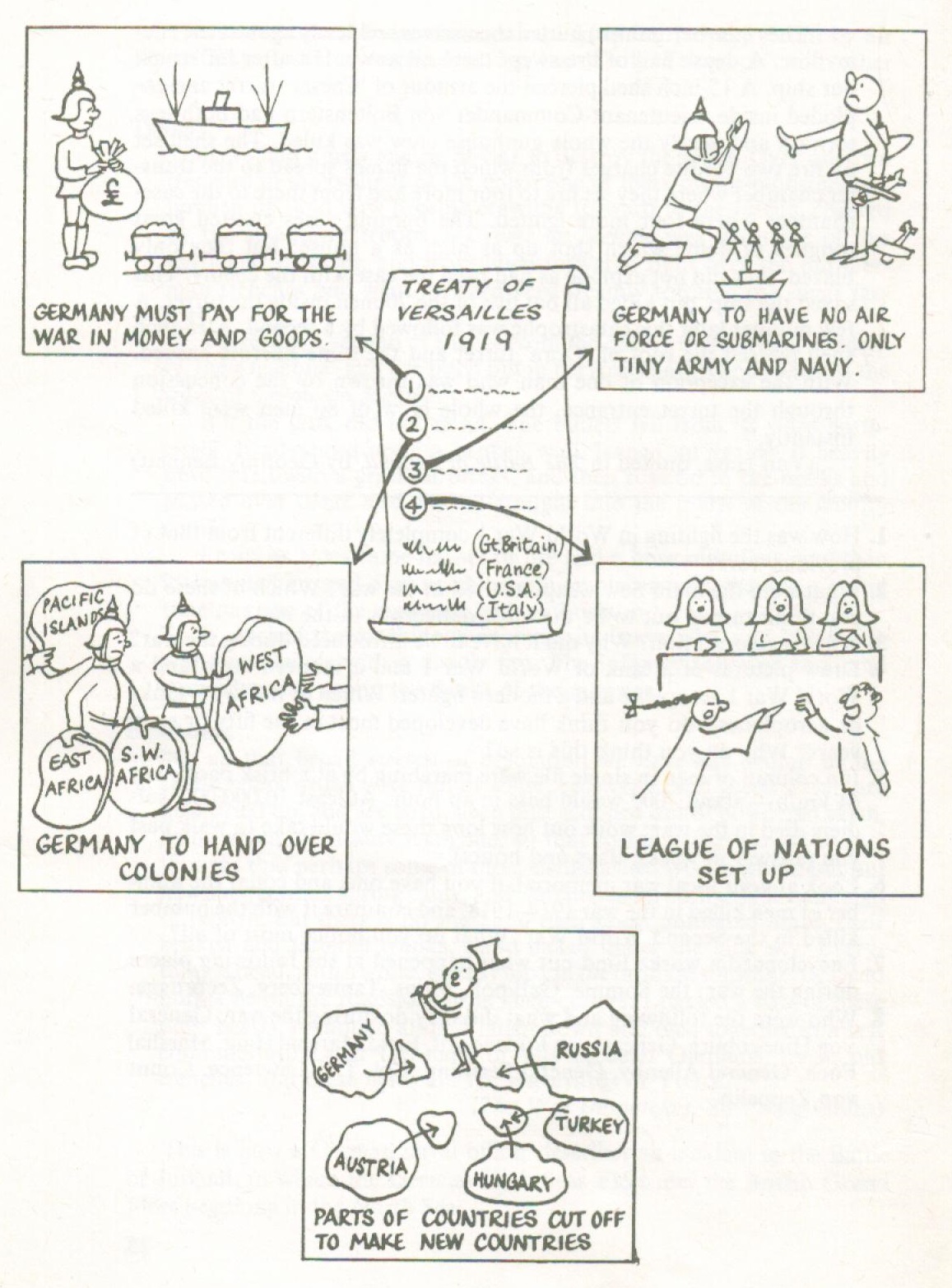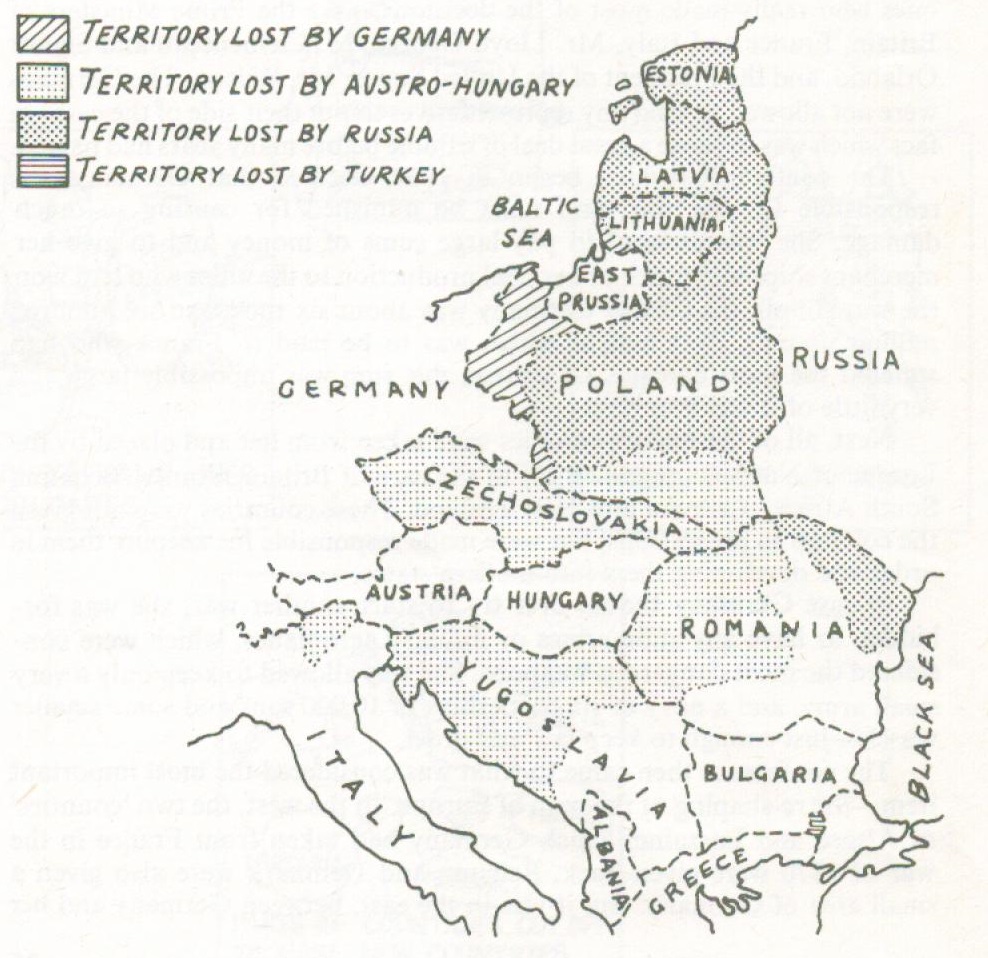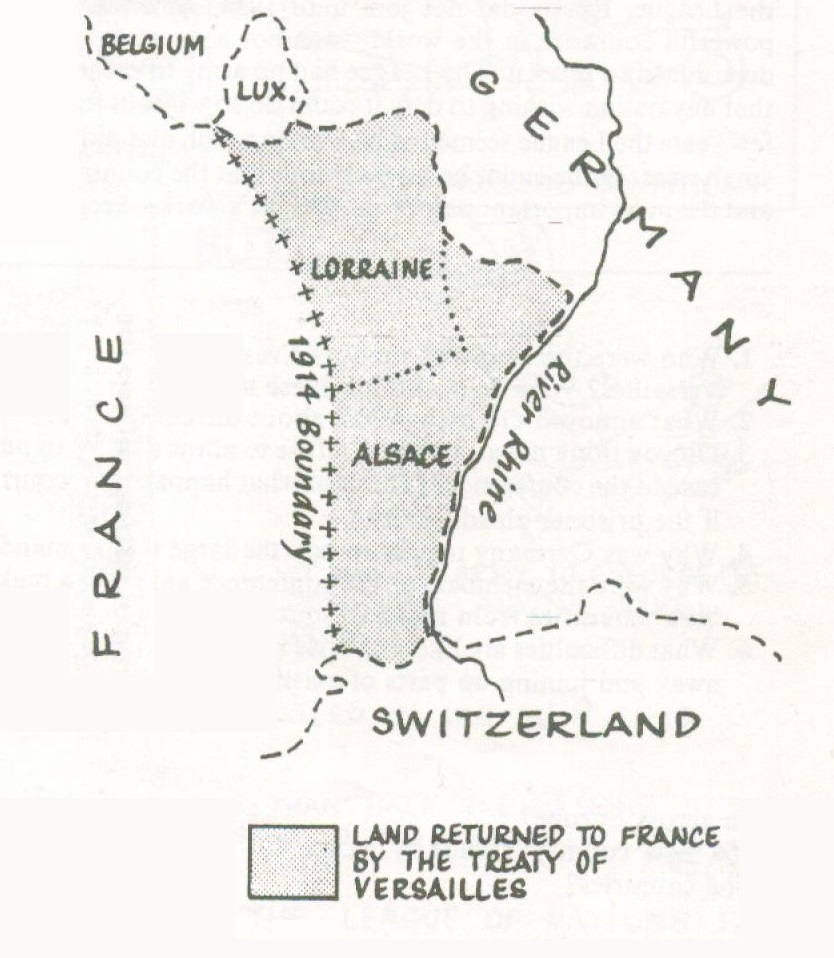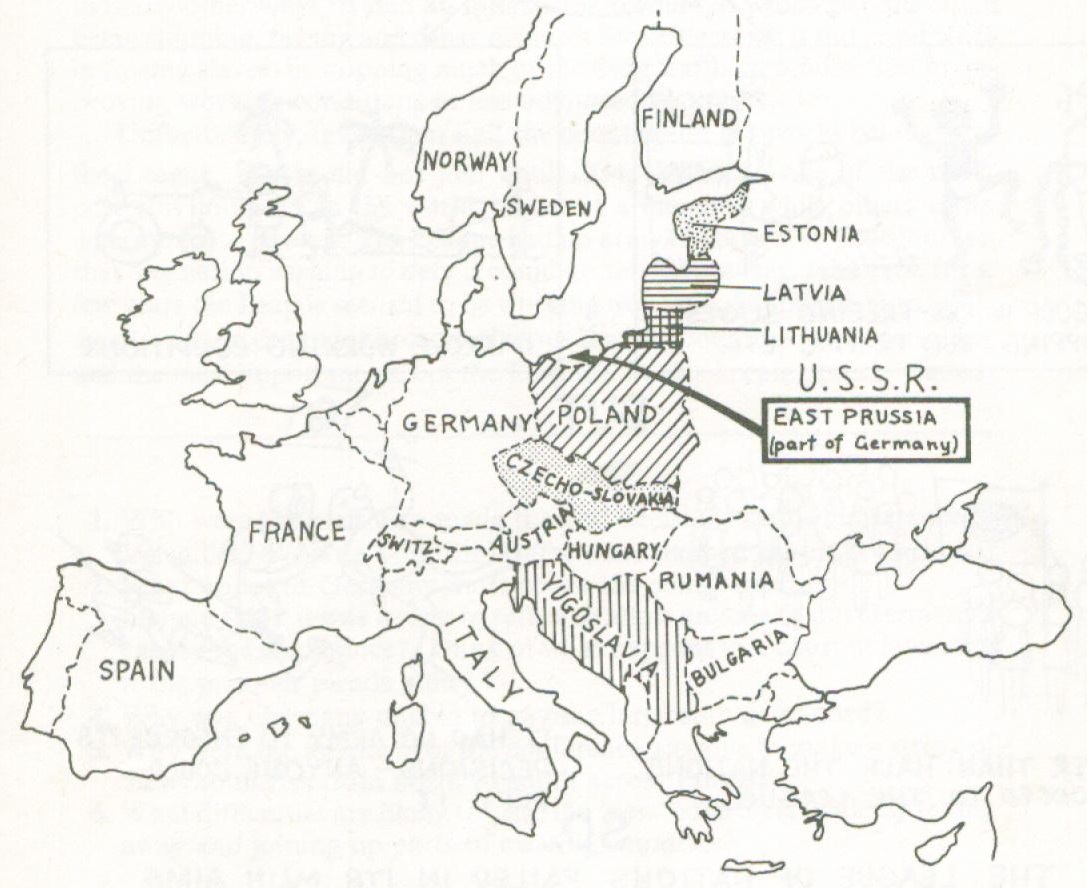|
The Treaty of Versailles

When the fighting ended on November 11th 1918, representatives of 27 nations, together with delegates from the British Dominions, who had
declared war on Germany (not all of them had actually taken part in the
fighting) met at Versailles, near Paris, to decide what was to happen to the
beaten enemy. The four most important men at the conference, and the
ones who really made most of the decisions, were the Prime Ministers of
Britain, France and Italy, Mr. Lloyd George, M. Clemenceau and Signor
Orlando, and the President of the United States, Mr. Wilson. The
Germans were not allowed to send any representatives to put their side of the
case—a fact which was to cause a great deal of trouble before many years had
passed.
The conference, which began in 1919, decided that Germany was
responsible for the war, and must be punished for causing so much
damage. She was ordered to pay large sums of money and to give her
merchant ships and much of her coal production to the allies who had won
the war. In all, the cost to Germany was about six thousand six hundred
million pounds, over half of which was to be paid to France who had
suffered the most damage. Of course, this sum was impossibly large and
very little of it was ever paid.
Next, all of Germany's colonies were taken from her and placed by the
League of Nations in the care of Britain, France, Belgium,
South Africa, Australia and New Zealand. These countries were not given
the colonies as possessions, but were made responsible for keeping them in order
and developing them into modern states.
In case Germany should ever try to start another war, she was forbidden to have any submarines or military aeroplanes, which were considered the most dangerous weapons.
She was allowed to keep only a very small army, and a navy of six battleships of
10,000 tons and some smaller vessels—just enough to keep law and order.
 
The new countries of Europe
The conference then came to what was considered the most important
item—the re-shaping of the map of Europe. In the west, the two 'counties'
of Alsace and Lorraine, which Germany had taken from France in the
war of 1870 were given back. Belgium and Denmark were also given a small
area of Germany.
But it was in the east, between Germany and her
Austrian ally and Russia that the greatest changes took place. Two completely 'new' states (Czecho-Slovakia and Yugo-Slavia) were created, and
one (Poland) which had been swallowed up by Germany and Russia
nearly a hundred years earlier, was given its independence again. Three
small states, Estonia, Latvia and Lithuania, were established between 1920 and
1922 from parts of the old Russian Empire on the eastern shore of the Baltic
Sea.
As far as possible the statesmen tried to make for the different races of
this part of the world—Poles, Czechs, Slovaks and Serbs—who had lived
for so long under foreign rule, their own country. Poland was created
from the Polish-speaking parts of Russia and Germany, and by other
treaties Czechoslovakia and Yugoslavia were formed from land formerly
belonging to Austria and Hungary. The vast majority of the inhabitants of
these 'new' countries were Poles or Czechs or Slovaks or Serbs as the case
might be, but as for the sake of convenience and defence the frontiers of the
states had to follow as far as possible a river or a range of mountains,
sometimes a small number of German-speaking people had to be included. It was impossible, for example, to make sure that every person living
in Czechoslovakia was a Czech or a Slovak, and these 'minority' groups
of Germans disliked being under the rule of another government which
spoke a different language and had different customs. They did not think
that the Czechs and the Poles had been in an even worse plight for a much
longer time. A few years later, the German government, after the Nazis
had come to power, accused the Polish and Czech governments of ill-treating the German inhabitants, and made this an excuse for taking back
part of the land they had lost. This was one of the main causes of World
War 2.

Note how the new countries formed a barrier between the U. S. S. R. and
Western Europe
The Treaty of Versailles made the Germans very angry, especially as
they had no representatives at the conference. Later on they argued that
they had never agreed to the conditions and as the treaty had been forced
on them, they need not obey it. Nevertheless, the men who drew it up
thought they had done a very good job indeed and had made sure there
would be peace in Europe for a very long time. They could not see at the
time that the treaty was to be one of the causes of an even worse world war.
QUESTIONS
1. Who were the men who made the real decisions at the conference of
Versailles? Why do you think these men claimed the right to do so?
2. What annoyed Germany most about the conference?
3. Do you think it was wrong to refuse to allow anyone to put Germany's
case to the conference? (Think of what happens in a court of law, even
if the prisoner pleads guilty.)
4. Why was Germany unable to pay the large sum demanded?
5. Why were the members of the conference anxious to make a string of
`new' countries from north to south across Europe?
6. What difficulties are likely to arise if a 'new' country is made by taking
away and joining up parts of existing countries?
7. What were the ideas behind the creation of the new states of Czechoslovakia and Yugoslavia, and the re-creation of Poland?
8. The map of the north-eastern corner of France shows the frontier with Germany. It shows the two 'counties' of Alsace and Lorraine
which Germany took from France in 1870, so that in 1914 the boundary
between the two countries ran along the line marked with crosses. Noting particularly the deep, wide river Rhine, why do you think the
French were especially anxious to have these two 'counties' back again?
9. Which parts of the Treaty of Versailles most upset countries and laid
the foundation of another world war? �
|